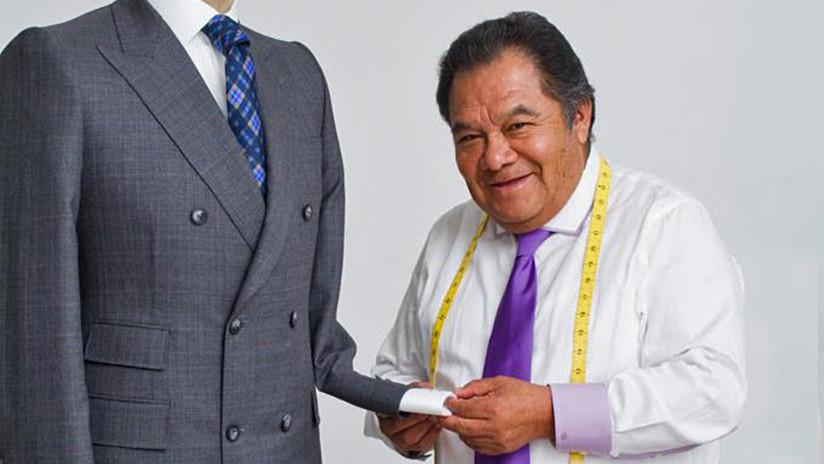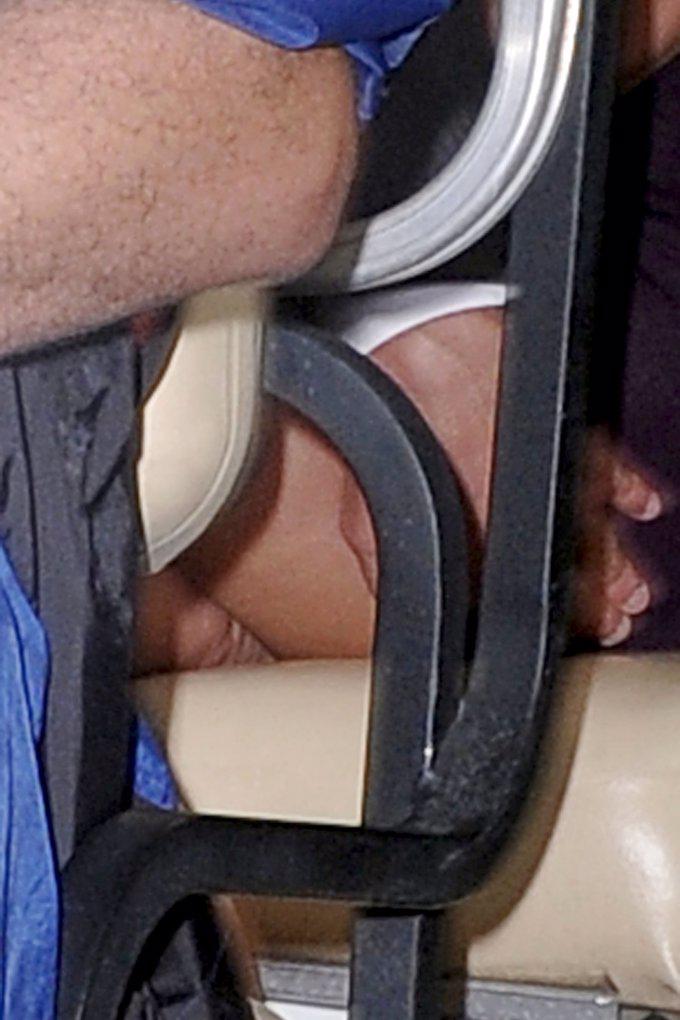The indigenous tailor who makes the clothes of the powerful in Mexico
Very few people in Mexico understand the art of cutting fabric and making tailored clothing as does the master Gilberto Ortiz Osorio, considered by Scabal, the famous men's clothing house based in Brussels and London, as one of the three best tailors in the world.
Gilberto Ortiz continues to be "that 12-year-old boy who arrived in Mexico City in 1965 from the town of San Andrés Lagunas, in Oaxaca," as he himself tells RT. And he adds: "By chance, when I arrived in the country's capital, the first thing I saw were hat shops and tailor shops, which fascinated me."
In an interview with RT en Español, teacher Ortiz Osorio recalls that he arrived in the Mexican capital without a home, job or money to survive: "During my first days in Mexico City, I was barefoot, walking on the first quadrant of the Zócalo. I remember that I got to sleep under a bridge and walk around with my clothes full of dirt".
RT: How did your interest in designing and making clothes come about?
G.O.: I don't have a record or a clear moment in which this interest arises. My father used to say that my grandfather would cut the needles from the maguey stalk and make a hole in the center, and from the same needle he would take out the 'ixtle' and use it as fiber to make blanket underwear, which they used and continue to use. the inhabitants of the Mixtec zone of Oaxaca.
RT: Who could you say were your teachers who introduced you to the world of tailoring in Mexico?
G.O.: Everything I know, I learned from a man of German origin named José Schroeder. I remember that on one occasion he approached me to ask if he wanted to work as an assistant in his tailor shop. I accepted without having any knowledge in making clothes. He chose me because every day I posed outside his tailor shop, because I was fascinated to see how they cut and measured the fabrics in said workshop.
RT: What were your first tasks in José Schroeder's clothing workshop?
G.O.: My main task was to keep the place clean, that is, I washed the bathrooms, scrubbed the floors and brought food for the master tailors, as well as ordering between 10 and 20 liters of pulque daily, a typical Mexican drink that they consumed thanks to the fermentation of the maguey. Because of this, I was able to spend the night in Mr. Schroeder's workshop and practice my skills as a dressmaker.
A boy from Oaxaca dressed María Félix

Gilberto Ortiz's talent and desire to learn soon became relevant in the country. From being the child who left his town in Oaxaca, in a short time he became the apprentice who made clothes for great figures in the artistic world such as María Félix, one of the most influential actresses of the golden age of Mexican cinema.
"Thanks to the tailor Schroeder, I met great figures like María Félix, who on some occasion told me: 'Look Gilberto, I send my clothes to France and Italy, and the only one who has taken measurements for me is Christian Dior ' I didn't even know who that man was," Ortiz Osorio says with a laugh. "Félix was a true diva, a very demanding character," recalls the Mixtec tailor.
After seven years of working in the workshop of the tailor Schroeder, who according to Ortiz Osorio made several suits for the German leader Adolfo Hitler, he asked him that "it was time for me to fend for myself, and design and make clothes with my own clients", he tells RT. And he adds: "At the time, I perceived this great advice as dismissal, and rather it taught me not to give up."
RT: Who have been the most influential or powerful clients you have worked for?
G.O.: In 1978, after ending my employment relationship with Don Schroeder, with the little money I had, I allied myself with Edmundo Calanchini, a citizen of Italian origin with whom I founded a clothing store called 'Calanchini'. His idea was for me to make the clothes, and Edmundo gave me all the materials and tools to do it. There I began to design clothes for politicians and businessmen of Jewish origin.
RT: At what point did you decide to become independent?
G.O.: After working with Calanchini, I allied myself with a businessman of Spanish origin named Alejandro Poo, who taught me the trade of fine tailoring, which was recurrent among many of the Mexican politicians of the 80s and 90s, whose names I cannot reveal. Until finally, in 1997, I founded my haute couture workshop, Gilberto Ortiz and sons, at 209 Londres Street, in Mexico City.
RT: Until three years ago, whoever walked down Londres street, in the so-called Zona Rosa, could see him making haute couture garments. Why did you decide to close that establishment?
G.O.: I had some legal problems. As you well mention, I decided to move to my house in the municipality of Ixtapaluca, in the state of Mexico, because it turned out that the owners of the premises to which I rented were not the original owners. Working in the heart of Mexico City was a very nice experience, but also a bit chaotic.
A brand inspired by Juan Gabriel
After dressing great figures such as María Félix, David Reynoso and Rodolfo de Anda, as well as the then young journalist Joaquín López-Dóriga and a former Mexican president of whom he prefers Without revealing his name, the tailor Gilberto Ortiz met the singer Juan Gabriel, famous in Mexico and much of Latin America and Europe. "I met 'Juanga' thanks to a Christian Dior designer," recalls Ortiz Osorio.
RT: How was your first meeting to work with Juan Gabriel?
GO: Disastrous! A designer from the Dior brand asked me to meet at the Sheraton Hotel in Mexico City, because we would see a great Mexican singer there. I didn't know it was Juan Gabriel. It is worth mentioning that he never received me, he sent me clothes with his assistants so that I could make clothes for him, without even taking measurements in person. I refused of course.
RT: Faced with the refusal of Juan Gabriel, how did you become the tailor of one of the idols of regional Mexican music?
GO: Do you know why 'Juanga' didn't receive me in his room? Because she didn't like being measured. I explained to his assistant that I did not work with other garments, that I needed to measure. The singer agreed and the first thing he told me between jokes was: "And who do you think, why do you give me so many excuses to make my clothes?" we both laugh. From there we became great friends.
RT: Currently, what projects are you working on?
G.O.: In 2006, Juan Gabriel suggested that I create a new clothing brand called Gioros, the abbreviation of my name, Gilberto Ortiz Osorio. He argued that all people should wear my clothes, and not just a privileged sector of Mexican society. "We owe our success to the people," the singer constantly said.
RT: Thanks to Juan Gabriel, will you launch a new clothing brand for Mexicans?
G.O.: That's right, for me Juan Gabriel is an inspiration. In about 15 days, we will launch a new brand of denim pants for men and women under the Gioros brand. The profits from this first batch of pants have already been donated to the victims of the states of Morelos and Oaxaca, after the havoc caused by the constant earthquakes in the Mexican Republic.
RT: What is your opinion of today's Mexico, a country that suffers from violence, corruption and impunity?
G.O.: As long as we remain stunned by this reality, nothing will change. We have to be aware that our country is a very rich nation with great citizens. Today it is time to believe that Mexico can be better, it is up to us to believe it and, above all, to create it.
Jose Luis Montenegro




